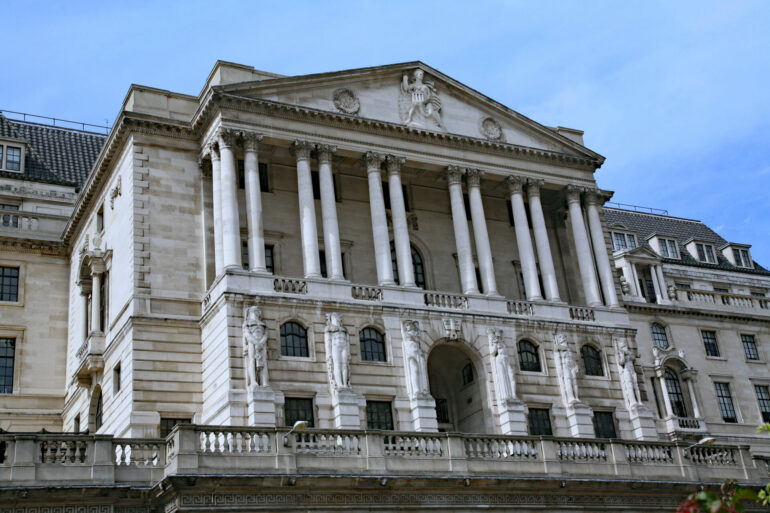Net borrowing of mortgage debt by individuals decreased slightly to £5.1bn in July, from £5.3bn in June, according to the latest Bank of England (BoE) figures.
This is above the pre-pandemic average of £4.3bn in the 12 months up to February 2020. Gross lending increased to £26.1bn in July from £24.6bn in June, and gross repayments increased to £20.8bn, from £19.4bn.
Approvals for house purchases, an indicator of future borrowing, increased slightly to 63,800 in July, from 63,200 in June, which is below the 12-month pre-pandemic average up to February 2020 of 66,800.
Approvals for remortgaging (which only capture remortgaging with a different lender) increased to 48,400 in July, from 43,300 in June. This also remains below the 12-month pre-pandemic average up to February 2020 of 49,500, however.
Reaction
Steve Seal, CEO, Bluestone Mortgages:
“Despite inflation running at historic highs, the homeownership dream lives on. We’re seeing an increase in gross mortgage lending as people flock to secure a fixed rate mortgage or remortgage to protect themselves against further rate rises.
“However, as the cost of living crisis continues to squeeze the pockets of many, we expect to see a growing cohort of customers locked out of the mainstream lending market, and turning to specialist lenders for support.
“For those who find themselves in this situation, it’s important to remember that hope is not lost. Specialist lenders are on hand to support customers’ evolving needs and have a range of solutions to help them climb onto or up the property ladder.
“Ultimately, all lenders have the responsibility to ensure customers are pointed in the right direction so that each and everyone has the opportunity to make their homeownership dreams come true.”
Emma Hollingworth, distribution director, MPowered Mortgages:
“After gross mortgage lending fell slightly in June, it is positive to see a slight increase in July, despite the cost of living continuing to rise. Whilst it’s becoming increasingly clear that we’re moving into a new environment of higher inflation and rates, it’s positive to see the mortgage market remaining resilient.
“However, with the cost of living continuing to increase and mortgage rates increasing, many households will find their finances squeezed. Those looking for a suitable and affordable mortgage product will need a quick and certain answer to what mortgages are available to them. It has never been more important that it is now to execute mortgages as quickly as possible, whilst also easing the pressure on homebuyers and remortgagers during what is a challenging time to purchase and remortgage a home.
“At MPowered Mortgages, we’re using data-driven innovation and targeted AI to increase automation, reduce complexity, and speed up the process of receiving a legally-binding decision. Furthermore, our range of mortgage products which include cashback and no arrangement fee options, as well as a free valuation on every application, are aimed at easing the financial burden of buying a home.”
Lisa Martin, development director, TMA Club:
“Today’s figures reflect a resilient mortgage market. Despite recent interest rate hikes and the cost-of-living crisis influencing a more cautious approach by lenders, it is positive to see a slight increase in gross lending and mortgage approvals, resulting from a recent spike in remortgages.
“As prices are likely to continue to rise throughout the year, and another potential rate rise on the horizon, customers will be looking to brokers to act swiftly to secure the best deals and lock into fixed rates before mortgages are replaced or pulled from the market.”
Mark Harris, chief executive of mortgage broker SPF Private Clients:
“The rate paid on new mortgages rose by 18 basis points to 2.33% in July, the highest since June 2016, although the pace of repricing seems to have subsided. It is no surprise that the number of borrowers remortaging rose as homeowners try to secure a rate before they become even more expensive.
“Lenders have money to lend and remain keen to lend it although volume management is the name of the game. The market was a little quieter in July, a pattern since repeated in August, and it will be interesting to see how September turns out.
“Rising energy bills are impacting affordability calculations and lenders are broadening policy for higher income households accordingly. This could be via higher loan-to-income multiples and various income allowances or higher loan values.”
Jeremy Leaf, north London estate agent and a former RICS residential chairman:
“Mortgage approvals generally prove to be a very useful lead indicator of future housing market activity. As a result, these latest numbers are probably being watched even more closely than usual for signs of any significant changes in response to recent sharp increases in inflation and energy prices in particular.
“It’s a little too early as interest rates are yet to have an impact, bearing in mind approximately 80% of mortgage holders are on fixed rates and there are around 40% of ‘cash’ buyers. Nevertheless, the market is holding up well and proving its resilience, at least for the time being. Much of the recent softening will be just as much to do with the summer holiday period and we will find out more when people return over the next few weeks.”
Richard Pike, chief sales and marketing officer at Phoebus Software:
“The resilience of the housing market against the current economic backdrop is becoming par for the course, but how sustainable this is remains to be seen.
“Each month, when we expect there to be a drop in activity, the figures tell of buoyancy and continued appetite, albeit the pendulum swing from a seller’s market to a buyer’s market could start to bring prices down.
“As existing deals come up for renewal and also borrowers on variable rates look for the protection of being able to budget and therefore look to fix, re-mortgage activity will remain strong. Today’s figures do also show slightly more reliance on personal debt and one wonders how this trend will continue and what the longer term effect on areas such as affordability will look like because of this.
“Although mortgage arrears fell again in Q2, the likelihood is that this trend will change in the coming months as interest rate rises begin to have more of an effect and energy and other cost of living prices rise.
“Lenders may need to offer more generic debt and budgetary advice to their customers who are unable to get in front of MAS and similar agencies due to pure volume of enquiries. A pro-active approach in these unprecedented times for many is required.”

Simon Webb, managing director of capital markets and finance at LiveMore:
“Mortgage lending remains steady with an increase in gross lending but net borrowing is down slightly. This shows a slowdown in people taking out mortgages in July.
“Looking ahead, using the mortgage approvals figures, there was an increase although it was less than 1% and 4.5% lower than the pre-pandemic 12-month average. So we could see lending figures lower in the next two or three months.
“As the cost of living, particularly energy prices, keeps on rising along with future increases in mortgage rates, home buyers will find it increasingly difficult to afford a new home. That’s assuming they can find one as housing stock for sale still remains low and house prices are still rising, although at a slower pace.”
Tomer Aboody, director of property lender MT Finance:
“With mortgage lending decreasing, there’s a sense of caution emerging from buyers looking to purchase, due to increasing interest rates and inflation.
“Although there is caution, we need to be realistic and also look at it in perspective to where the market was previously. Borrowing and sales are still higher than pre-pandemic levels, and borrowing rates are still lower than nearly a decade ago.
“While society got used to cheap money and low cost of living, the new reality needs to set in with buyers and consumers managing their costs, and their ability to buy. The ultimate dream home at that higher price point might not be achievable now but buyers should still have some leeway due to affordable rates.”
Paul McGerrigan, CEO at fintech broker Loan.co.uk:
“There are strong signs the property market is coming to a soft landing rather than a crash in the face of the cost-of-living crisis. The Bank of England’s Money and Credit Data shows mortgage borrowing has continued to decrease from its £8bn peak in May, with July figures showing a £0.2bn reduction on the previous month – down to £5.1bn, however, mortgage approvals (the sign of future borrowing) increased slightly to 63,800, up 600 on June, confirming there is still reasonable demand, despite rising interest rates and rocketing energy costs.
“Financial pressures on household incomes continue to increase, but there are signs that demand for property still remains strong. It’s a rising rate market. An increasing trend sees borrowers breaking shorter term fixed rate deals, paying ERC’s to fix a rate now for longer period, to give them certainty in their budgeting. While this may be good for some borrowers it will not be right for all. It is an exceptionally tricky time for people to make key financial decisions and they are having to make tough calls.
“The role of the mortgage adviser is more important than ever to help clients negotiate these turbulent financial waters. Proactivity and breadth of offering are vital to help people’s changing needs. There are always solutions which can help and it’s important to provide, up-to-date, expert advice to reach best outcomes for clients.”
John Phillips, national operations director at Just Mortgages:
“Despite predictions of doom and gloom the housing market once again performed strongly with net borrowing in July only decreasing slightly from June and still £1bn above the pre-pandemic average.
“With winter just around the corner the reality of higher energy costs will be coming sharply into focus very soon and household budgets will need to be adjusted accordingly but with house prices showing tremendous resilience the immediate future of the housing market remains strong.
“Feedback from our brokers across the country reveals that remortgage activity is increasing with homeowners keen to secure a competitive rate before further rises but there is also a steady flow of new borrowers. This is born out in today’s statistics that reveal approvals for house purchases in July, an indicator of future borrowing increased to 63,800 in July, from 63,200 in June.
“Realism will be the watchword for prudent lending over the remainder of the year! Borrowers will need to have realistic borrowing expectations which, combined with professional advice from mortgage brokers will ensure they get the loan they want. Although the ‘effective’ interest rate on newly drawn mortgages increased by 18 basis points to 2.33% in July, mortgage rates are still relatively low in historic terms and, with sensible lending policies any sort of future housing crisis can be avoided.”




